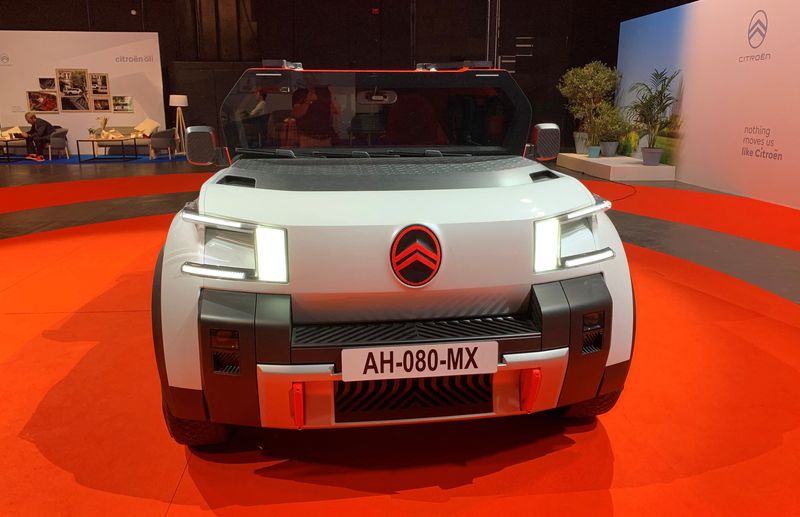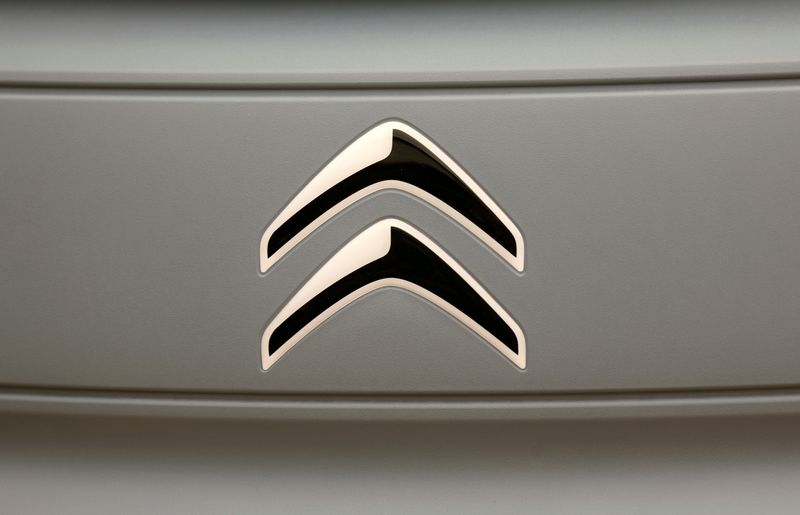By Gilles Guillaume
LA PLAINE ST DENIS, France (Reuters) - Imagine a future world starved of resources where carmakers have to resort to replacing the metal in your car's roof and hood with cardboard.
That's what Citroën has done with a new concept car designed in anticipation of a resourceless world, using cardboard instead of steel for those parts.
This is no ordinary cardboard, but a specialised honeycomb format reinforced with plastic coating on each side that is strong enough to be stood on without buckling.
It was developed in partnership with German chemical giant BASF. This and a vertical windscreen designed to reduce the amount of glass needed and save weight make the electric Citroën "Oli" concept car look like a futuristic SUV.
During the Soviet era, a common, erroneous, urban myth held that the Trabant, a small two-stroke engine car produced in the former East Germany, had a body made of reinforced cardboard - and if it rained hard enough you could punch a hole in it.
In fact, the Trabant was made of "duroplast", a plastic reinforced with recycled cotton waste from the former Soviet Union.
Citroën, which is part of world No. 4 carmaker Stellantis, and BASF have succeeded in turning popular legend into reality.
"It's more than just a concept car like you're used to seeing," Citroën director of future products Anne Laliron told Reuters. "It's almost an expression of new lifestyles."
Designers at Dacia, the low-cost brand of Renault (EPA:RENA), have also tried their hand at this exercise, coming up with the "Manifesto" concept car. Unveiled in mid-September, it also seems to have come out of a "Mad Max" movie, set in a post-apocalypse world where oil is worth more than gold.
ROAD MAP
Dacia's off-roader is a bare-bones vehicle focused on the basics, including a cork dashboard where you can pin a good old-fashioned paper road map in the event there is no signal for GPS navigation.
To account for the possible effects of climate change and component shortages, the Citroën Oli weighs under 1 tonne (1,000 kg) and cannot exceed 110 kilometers (68 miles) per hour.
Wire harnesses have been removed from the door panels - which only have eight parts versus an average of 35 in today's cars - the key lock has returned and the dashboard uses information from the driver's mobile phone for communication or entertainment.
The windows open manually and the vertical windscreen - which also cuts the impact of solar radiation inside the vehicle and thus reduces the need for air conditioning - means a vent must be fitted on the hood to recreate a windscreen's effect on vehicle aerodynamics.
Oli is also designed to be recyclable and easy to repair so that it can last at least three generations, or 50 years.
"It's an object that will last, that we will be able to repair, always bearing in mind that we used resources to manufacture it," Laliron said. "We must therefore make it last as long as possible."

Work on the concept car began in 2019 and has arrived in an era beset by raw material shortages caused by the coronavirus pandemic and the war in Ukraine.
"It is clear that what we have experienced in the last few years has further strengthened our intuition, our ambition," Laliron said.
